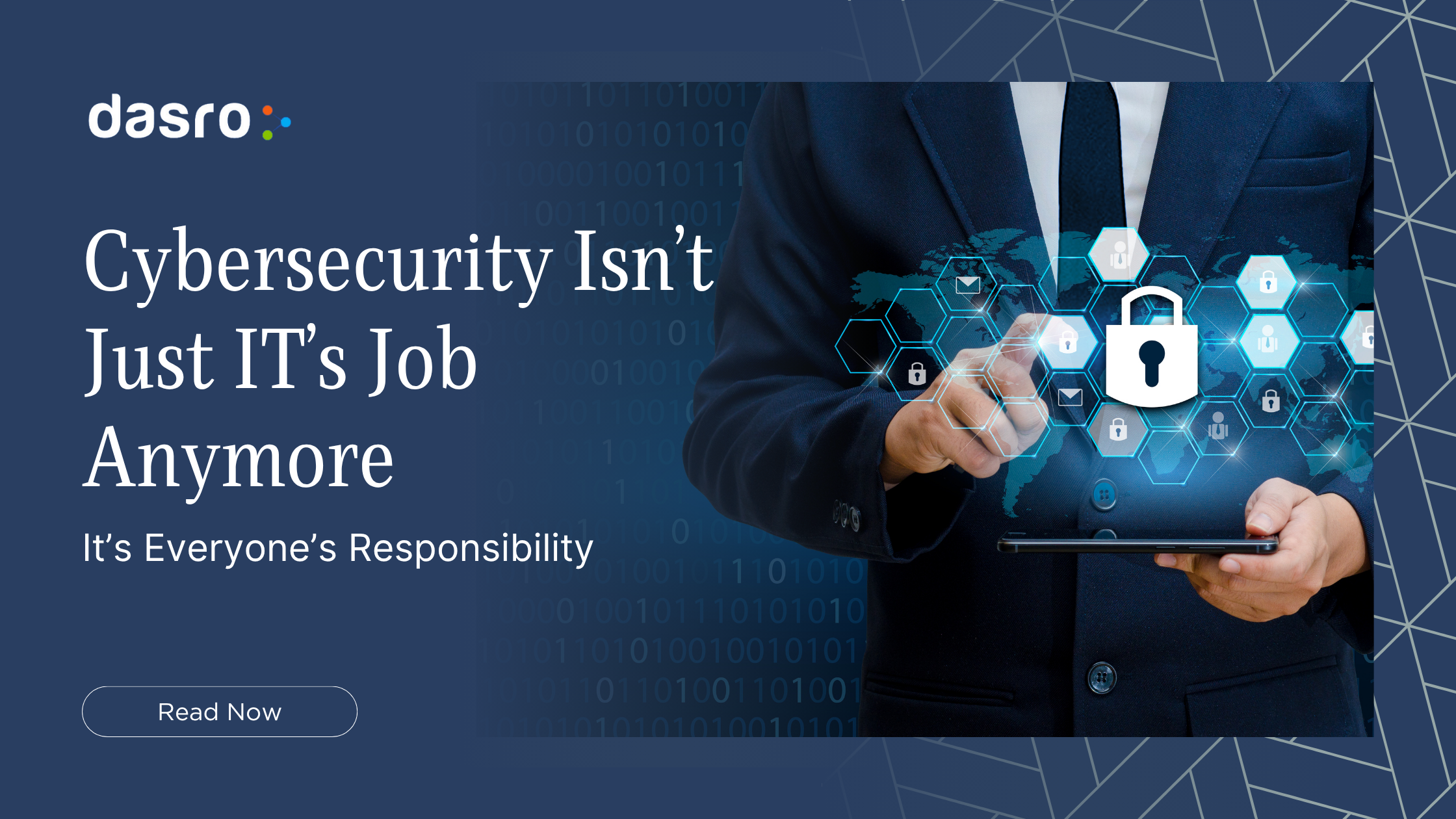
Every October, we’re reminded of something that’s become increasingly true: cybersecurity isn’t just about firewalls and encryption anymore, it’s about people.
Technology can protect you from a lot, but it can’t stop someone from clicking the wrong link, reusing an old password, or accidentally sharing the wrong file. That’s why, as the digital world expands, cybersecurity awareness has become everyone’s job, from the intern onboarding their first week to the CEO managing critical data on the go.
Let’s unpack why this shift matters, what “shared responsibility” really looks like, and how organizations can turn awareness into everyday resilience.
Once upon a time, cybersecurity was about securing the network perimeter, keeping bad actors out of physical systems and internal networks. But as cloud apps, hybrid work, and mobile devices became the norm, that perimeter disappeared.
Now, the most important layer of defense isn’t your firewall, it’s your people.
A 2024 report by IBM found that over 74% of security breaches involved human error. That’s not to point fingers-it’s to highlight how much everyday actions matter. Clicking on a phishing link, ignoring a software update, or using “welcome123” as a password can all open doors for attackers.
Training, culture, and daily habits are now as vital as any technical control. When employees understand why security matters, and how their actions make a difference -they become your first line of defense.
Let’s be honest: traditional cybersecurity training doesn’t work the way we wish it did.
A once-a-year slide deck or a quick quiz might check a compliance box, but it rarely changes behavior.
The new standard? Continuous, contextual learning.
That means microlearning moments,short, relevant reminders that fit into the flow of work.
It means simulated phishing campaigns that teach, not shame.
And it means leaders setting the tone -showing that cybersecurity is part of how business gets done, not a side project for the IT department.
Some organizations have even gamified security, turning awareness into friendly competition. The goal isn’t fear; it’s confidence. When teams feel empowered to spot and report issues, the culture shifts from reactive to proactive.
Insider threats are one of the hardest risks to manage. They can be malicious, like an employee stealing data or accidental, like someone sending confidential information to the wrong person.
In both cases, awareness is the difference between prevention and damage control.
Building trust and visibility is key. When employees understand why data protection policies exist (not just that they do), they’re more likely to follow them.
And when organizations create an open culture where reporting mistakes isn’t punished, they uncover risks faster before they escalate.
Cybersecurity culture doesn’t start in the IT department it starts in the boardroom.
When leaders talk about security as part of business strategy (not just a cost center), it changes how teams respond.
For example, announcing a company-wide initiative on security hygiene or spotlighting employees who report potential risks sends a clear message: this matters to us.
It signals that cybersecurity is part of everyone’s performance, not an afterthought.
This top-down reinforcement is often what separates companies that recover quickly from incidents from those that don’t.
The next phase of cybersecurity isn’t about replacing humans with automation it’s about empowering them through smarter tools and simpler processes.
AI-driven detection systems can flag unusual behavior patterns before they become breaches.
Zero-trust frameworks ensure that access is never assumed, no matter who or where the user is.
And robust identity management platforms reduce friction for employees while keeping systems secure.
But none of this works without awareness. Because technology doesn’t fail on its own it fails when it’s misunderstood, misused, or ignored.
Here’s what organizations can do right now to make cybersecurity awareness part of everyday work:
Cybersecurity Awareness Month is a great time to refresh policies, re-engage teams, and rethink your company’s security posture. But the real goal is long-term cultural change.
The truth is, cybersecurity isn’t a once-a-year campaign it’s a mindset.
And it’s one that needs to live in every conversation, project, and department.
Before you can strengthen your cybersecurity posture, you need to understand where you stand today. That’s why more organizations are turning to structured cybersecurity assessments not just to uncover risks, but to prioritize and act with purpose.
If you’re ready to evaluate your current setup, identify weak spots, and design a smarter, human-centric security plan, start here:
Cybersecurity Assessment & Engagement
Because awareness doesn’t start with fear it starts with understanding.